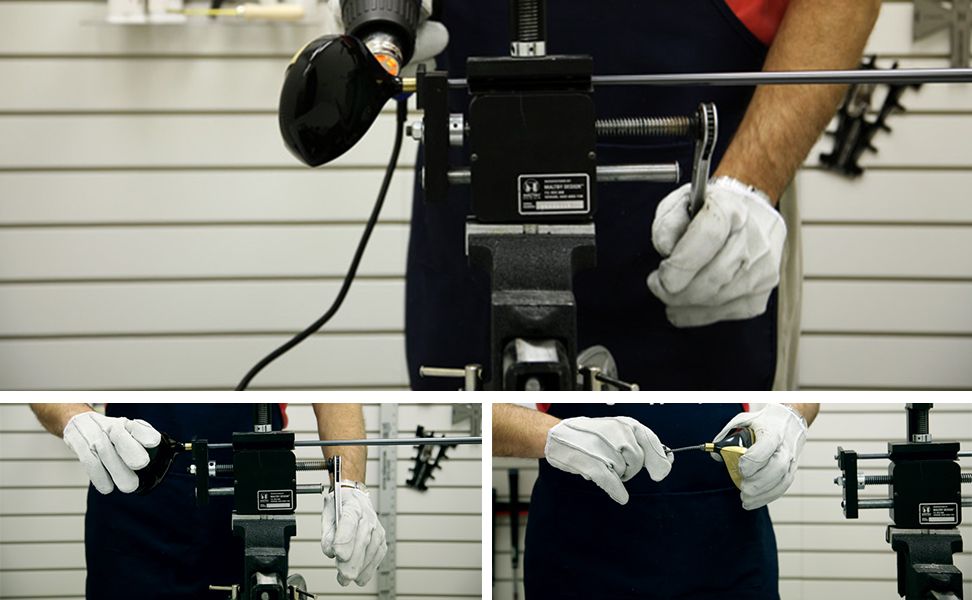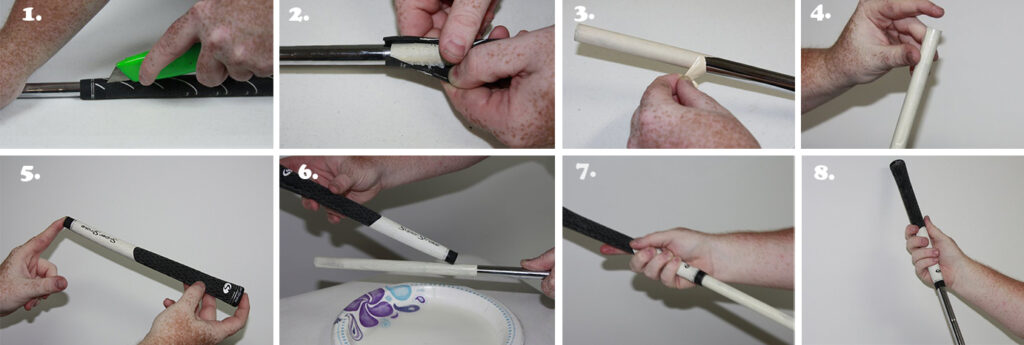
Are you looking to reshaft your golf driver? Maybe you have decided to do that, but you aren’t sure if you should bring your driver into a pro shop or do it yourself. It might even be best to toss out the idea of reshafting totally and just buy a brand new driver. This post will highlight whether or not a driver can be reshafted, how much it will cost to reshaft your driver, and whether or not you should reshaft your driver or bring it into a professional. You’ll also find out if it is easier to reshaft your driver or buy a new one.
A golf driver can absolutely be reshafted. Reshafting, your golf driver, has many benefits, such as boosting your performance. By reshafting the driver, you will be saving money since it is significantly cheaper than buying a new one.
You may want to consider playing the game with another driver similar in weight to your preferred shaft to see if it is a good fit before permanently reshafting your driver.
The process of reshafting a driver is not as complicated as you may think. Although you can bring a golf driver to a repair shop, it is relatively simple to replace it at home. When replacing your shaft at home, though, you have to be careful to follow all of the steps carefully, or else you have risk-averse effects on your golf Trusted Source Netflix teaming up with PGA Tour and golf's majors for 'immersive' docuseries with glittering cast of players - CNN The streaming service announced on Wednesday it will be teaming up with the PGA Tour and golf’s major championships to release an “immersive documentary series.” The series will follow the lives and stories of some of the biggest names in the sport as they compete across the globe during the 2022 season. The announcement revealed the star-studded cast of golfers it would follow, in a series that will be produced in part by the company behind the “Drive to Survive” series in Formula One which has become so popular. www.cnn.com game.

Yes, it is possible to reshaft an adult driver for a child. It is best to remember that by reshafting the drive, you considerably lower the swing weight.
Golf Trusted Source 125 Years After the First College Golf Match, a Rematch On a fall day in 1896, a group of Yale students, caught up in a new sports craze called golf, traveled from their New Haven, Conn., campus by train and stagecoach to a course north of New York City — one of the few clubs in the country at the time — to take on some chaps from Columbia. www.nytimes.com shafts range in price, as do club repairs. There are different variables involved when reshafting a driver. Some shafts cost approximately 400 dollars, while the typical cost is between 20 through 100 dollars. If you choose not to replace reshaft your driver yourself, you may also have to pay labor costs. Labor costs may range from 5 to 35 dollars. You can’t forget that every replacement shaft will need a new grip, and those cost around 8 dollars.
Graphite shafts are more costly than steel ones. The drives sold by the best manufacturers are graphite shafts such as the Callaway Golf 2020 Mavrik Max Driver and the Callaway Big Bertha B21 Driver. Choosing a graphite shaft will be more expensive and add to the cost of reshafting.
In addition to the labor cost and grip, there are other additional costs involved in reshafting your driver. Items you may need to purchase:
Together all of these items will cost approximately 52 to 63 dollars. That is significantly cheaper than buying a new golf driver altogether.
Yes, reshafting your driver is worth it whenever you notice one of these changes in your swing:
Whether or not you reshaft your driver or buy a new one is up to you. If the driver is barely cracked or damaged at either of the two sides, it may be better to reshaft. Nonetheless, if broken down the middle, it will be in your best interests to purchase a new driver. Also, make sure the shaft you want to use for reshafting fits on your clubhead the right way. Buying a new driver may be necessary if the clubhead doesn’t fit and a replacement shaft is required.
Some golfers look for clubs that absorb vibrations or generate a heightened takeoff look for driveshafts with that feature. Go to your local golf club or store and try out an existing driver. You may not be getting that from the golf club you are using now, so in that case, you probably want to buy a new driver.
An improved increase in performance is a benefit of reshafting a driver. Having a shaft unique to your swing speed and technique and the correct length and weight will improve your driver’s performance. Another benefit of reshafting your driver is that it is cost-saving. Replacing the shaft on a moderately new driver can increase your performance as well as save you money. A great benefit of reshafting is that you get to use a shaft that matches your playing technique. Beware, though, if not done the right way, reshafting may lead to a harmful impact on your golf game.
One way to save money reshafting your driver is to check the warranty. By checking the contract, you will find out if the manufacturer will replace the golf driver. You can also save costs by reshafting your driver is by doing it yourself. When you opt to reshaft your driver yourself, all the money you spend will be on the tools and utensils you need. There will be no extra labor fees or tips you will have to pay for having someone do the work for you.
There are many videos online that show you how to easily replace your driver shaft on your own. Replacing the driver shaft on your own or DIY is a cost-effective way to replace your driver shaft. Some of the adjustable drivers require a ferrule for reshafting. The ferrule should be in suitable shape before you reshaft. A ferrule in an acceptable condition will ensure you get the most satisfactory outcomes from your adjustable driver. A downside of the do it your self driver shaft is that your game will be negatively affected if done improperly.

Follow these four simple steps when removing the old shaft:

Follow these steps if you plan on reshafting your driver:
How long you have to wait after reshafting depends on the type of epoxy you use. Some fast-acting epoxy will be ready in as little as twenty minutes, but some others will have to be set for twenty-four-hour to forty-eight hours.
You may want to reshaft your driver because it is a great way to keep your clubs working at a high-quality level. It is essential to replace worn-out grips to have them feel like new again and a more comfortable experience.
There are both pros and cons of both options. By bringing your driver into a repair shop to be reshafted, you will be paying more money. Still, you know you will be getting a quality job done on it with some sort of guarantee. By reshafting your driver at home, you will be saving money. Still, there if you are not a professional golf repairman, there is no guarantee you won’t mess up on the work. If not done correctly, your game will be affected, and not in a good way.
There are many benefits to reshafting a driver, such as improving your golf game. There are even more benefits if you decide to reshaft the driver on your own without bringing it to a pro shop. By doing all of the reshafting yourself, you will save money. Although saving money is an excellent benefit, when not appropriately reshafted, your driver will begin to be detrimental to your game.